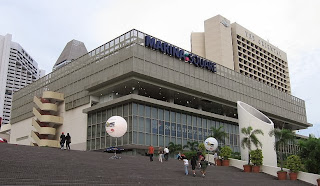What is Gamelan?
Gamelan is a collection of 'gongs' and xylophones of varying size and tone, which together form an orchestra of soothing 'plinky plonky' music. (It's rather hard to describe, so listen below!) Each person has a 'gong' and you have to learn to play in sequence / time with each other. Apparently it's quite difficult! There are usually other instruments in the Gamelan too - flutes, drum things, string things.. It's a nice sound.
Gamelan is native to Indonesia, and has an important place in Indonesian culture. But variations can be found in Malaysia and other parts of SE and South Asia.
(Thanks to Aurel Hollo for the video)
.jpg)









.jpg)
.jpg)
.jpg)
.jpg)